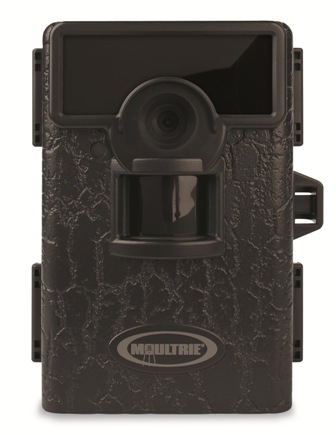Every year in Alabama and elsewhere, hunters and wildlife managers use motion-activated game cameras to monitor wildlife populations on their properties.
By Chris Jaworowski

Though game cameras most often are used by deer hunters and managers, landowners with feral hogs are increasingly using game cameras to improve hog trapping success rates. Game cameras allow users to tell how many hogs they are dealing with, how big their traps need to be, where to install traps, as well as when it is time to set traps.
Game cameras are available in a variety of configurations and costs. Some models use a standard camera flash, while others use infrared to illuminate wildlife species at night. Older models utilized a 35-mm film camera, but virtually all current models use a digital camera to take and store pictures or short video clips. The use of game cameras allows 24-hour surveillance of wildlife and the ability to monitor wildlife species throughout the year on a property.
MONITOR YOUR PROPERTY, WILDLIFE — Click Here Now
To control a nuisance species like a feral hog, the scale of the problem must first be determined. To accomplish this task, install game cameras at sites baited with whole kernel corn or soured corn. Check the game cameras in two weeks. Checking the game camera pictures will provide photographic evidence of the number, size and frequency of hogs visiting the bait sites.
After identifying the size of the hog problem, use this information to determine how large the hog traps need to be. If small sounders of three or four hogs are being seen, a box-type cage trap should be large enough to eliminate the problem.

On the other hand, if there are pictures of large sounders with 10 or more hogs, larger corral-type traps constructed using three to five 16-foot horse or goat panels will need to be built in order to increase the chances of catching the entire sounder in one night.
WANT TO BOWHUNT FOR HOGS? GET STARTED TODAY — Click Here Now
Using the time- and date-stamped pictures from the game cameras, construct traps in areas where bait sites were visited often by hogs. After constructing the trap, tie the trap door open and then bait heavily. Install a game camera to monitor the trap and return in a week or two. Bait the trap again and check the pictures for hogs utilizing the trap. Identify the size of the sounders visiting the trap based on number, coloration and gender of the pigs.
If there are pictures of all of the hogs in the sounder entering the trap, it is time to set the trap door. If some of the hogs are not entering the trap or just walking around it, install the camera again and be patient. The goal should be to catch all of the hogs in the sounder, so continue to monitor the trap until there are pictures of all of the hogs in the sounder inside the trap. When that happens, it is time to set the trap.
Using game cameras to monitor the hog traps will decrease the number of times the traps must be visited, which saves time and money.
The ability to identify the size and number of hogs visiting a trap, as well as when to set the door on the trap, teaches the trapper the most important aspect of hog trapping – patience. By using a game camera and learning to be patient, hog trappers will increase their trapping success rates.
KEEP YOUR GAME FRESH WITH THIS AWESOME COOLER — Click Here Now
For more information on the use of game cameras while hog trapping, contact Wildlife Biologist Chris Jaworowski at chris.jaworowski@dcnr.alabama.gov. Instructions for building a hog trap, as well as additional resources relating to feral hogs, may be found at www.outdooralabama.com/hunting/feral_hogs.cfm.
Chris Jaworowski is a certified Wildlife Biologist Alabama Division of Wildlife and Freshwater Fisheries.

